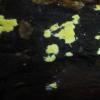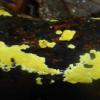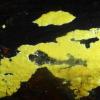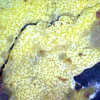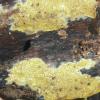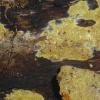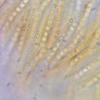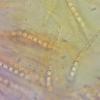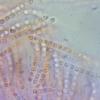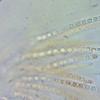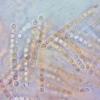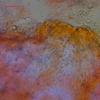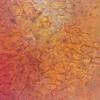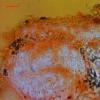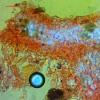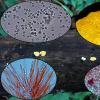
07-01-2026 10:24
 Danny Newman
Danny Newman
Pezicula sp. on indet. hardwood Appalachian Highl

07-01-2026 22:22
 Danny Newman
Danny Newman
Tatraea sp. on indet. hardwood The Swag, Great Sm

07-01-2026 17:29
 Marc Detollenaere
Marc Detollenaere
Dear Forum,On a barkless Populus I found some smal

10-11-2021 17:33
 Riet van Oosten
Riet van Oosten
Add-on topic http://www.ascofrance.com/forum/7059

07-01-2026 10:05
 Danny Newman
Danny Newman
cf. Chaetospermum on XylariaCosby Campground, Grea

02-01-2026 17:43
MARICEL PATINOHi there, although I couldn't see the fruitbody, I

04-01-2026 17:45
 Stephen Martin Mifsud
Stephen Martin Mifsud
I was happy to find these orange asmocyetes which
Trichoderma teleomorph ("Hypocrea") from mountain forest in Slowakia - T. margaretensis?
Lothar Krieglsteiner,
27-07-2023 21:19
 found 22.6.23 near Muran at margin of National Park Muranska planina, on still quite hard (not well cutable) blackened branch of Fagus silvatica lying on a forest road (through Fagus-forest mixed with Acer, Ulmus u.a.) on calcareous (Karstic) soil, ca. 540 m NN.
found 22.6.23 near Muran at margin of National Park Muranska planina, on still quite hard (not well cutable) blackened branch of Fagus silvatica lying on a forest road (through Fagus-forest mixed with Acer, Ulmus u.a.) on calcareous (Karstic) soil, ca. 540 m NN.I did not note fruitbodies of fungi (neither asco- nor basidiomycetes).
The color war strikingly citrine yellow, the growth effuse and measuring some cm (partly more than 2) in diameter.
The (hyaline) part spores are somewhat inequal, the distal ones roundish and about 4-4,5/3,5-4, the proximal ones somewhat elongate-ellispoid, about 4,2-5,2/3,2-4 µm.
I did not note a specially interwoven peridium. The dry specimen reacts orange with 5 percent KOH.
With the key of Jaklitsch I come best to H. (T.) margaretensis - macroscopically it fits so la la, but usually does not have that large ascomata. H. sulphurea has distinctly larger spores, and it grows on Exidia (not always obvious ...), it would fit macroscopically better. H. luteoeffusa also would be not too bad, but has still smaller spores and a special structure of the peridium I could not observe. H. aurantioeffusum (I found this species two years ago) is more orange and grows with Coprinellus.
I do not have better solutions than T. margaretensis, it was found repeatedly on naked Fagus wood.
Can somebody help?`
Yours, Lothar
P.S. My specimen is only air dried - good for possible sequencing ...
Fotos 1-3 fresh with digicam
Fotos 4-5 fresh with digital microscope
Fotos 6-7 dried, with digicam - 7 with KOH reaction orange
Fotos 8-13 asci and spores
foto 14: ostiole
foto 15: peridium
foto 16: perithecium and peridium cells
foto 17 and 18: sections
Foto 19: cells below perithecia
micro-fotos mostly in Kongo-NH3
Thorben Hülsewig,
29-07-2023 00:14
Re : Trichoderma teleomorph ("Hypocrea") from mountain forest in Slowakia - T. margaretensis?
Hi Lothar,
besitzen die Sporen ein Ornament ? Falls nicht, dann kannst du schon einige Arten ausschließen.
Viele Grüße
Thorben
besitzen die Sporen ein Ornament ? Falls nicht, dann kannst du schon einige Arten ausschließen.
Viele Grüße
Thorben
Lothar Krieglsteiner,
29-07-2023 10:10

Re : Trichoderma teleomorph ("Hypocrea") from mountain forest in Slowakia - T. margaretensis?
Hi Thorben, die Sporen sind glatt oder fast so. Ich werde daraufhin noch einmal "peilen".
VG Lothar
VG Lothar
Josep Torres,
29-07-2023 23:22
Re : Trichoderma teleomorph ("Hypocrea") from mountain forest in Slowakia - T. margaretensis?
Hola Lothar.
Algo muy parecido a lo que nos muestras lo tengo archivado como Hypocrea citrina, mi estudio lo contrasté con la información de las Claves para las especies de Hypocrea Europeas de 2010, aunque en mi trabajo las esporas eran un poco más grandes, midieron (4) 4.3 - 5.1 (5.6) × (3.1) 3.3 - 4.3 (4.5) µm., muy acordes con las citadas en las Claves de (3.7–)4.4–5.2(–5.8)×(3.5–)3.8–4.4(–4.8) µm.,
Pero tampoco tengo argumentos para defensar que en tu caso se trate de lo mismo y tampoco estoy seguro al 100 % de que la tenga bien identificada, hay muchas de parecidas dentro de su grupo.
Saludos cordiales.
Algo muy parecido a lo que nos muestras lo tengo archivado como Hypocrea citrina, mi estudio lo contrasté con la información de las Claves para las especies de Hypocrea Europeas de 2010, aunque en mi trabajo las esporas eran un poco más grandes, midieron (4) 4.3 - 5.1 (5.6) × (3.1) 3.3 - 4.3 (4.5) µm., muy acordes con las citadas en las Claves de (3.7–)4.4–5.2(–5.8)×(3.5–)3.8–4.4(–4.8) µm.,
Pero tampoco tengo argumentos para defensar que en tu caso se trate de lo mismo y tampoco estoy seguro al 100 % de que la tenga bien identificada, hay muchas de parecidas dentro de su grupo.
Saludos cordiales.
Lothar Krieglsteiner,
30-07-2023 10:34

Re : Trichoderma teleomorph ("Hypocrea") from mountain forest in Slowakia - T. margaretensis?
Hello Josep, thank you very much for your contribution and for your suggestion of H. citrina. But H. citrina I know quite well by numerous finds, it looks different and has a different ecology. So - maybe a new species ... ???
Yours, Lothar
Yours, Lothar
Hermann Voglmayr,
20-08-2023 19:09
Re : Trichoderma teleomorph ("Hypocrea") from mountain forest in Slowakia - T. margaretensis?
Hi Lothar,
in my opinion this fits well Trichoderma austriacum in habitus and colour, if the (cold-tone) yellow of the pictures is correctly displayed. Trichoderma sulphureum has darker, brighter yellow stromata but is otherwise similar. Spore sizes fit well also - and they may not be fully mature and therefore on the lower range. That stromata are immature is indicated by the fact that spores are apparently not ejected from perithecia upon drying.
T. austriacum grows on Eichleriella deglubens, but the host basidiomata are not always present (same like with T. sulphureum).
Immature T. sulphureum can also not be excluded as an option. However, I would exclude all other species.
Ceers, Hermann
in my opinion this fits well Trichoderma austriacum in habitus and colour, if the (cold-tone) yellow of the pictures is correctly displayed. Trichoderma sulphureum has darker, brighter yellow stromata but is otherwise similar. Spore sizes fit well also - and they may not be fully mature and therefore on the lower range. That stromata are immature is indicated by the fact that spores are apparently not ejected from perithecia upon drying.
T. austriacum grows on Eichleriella deglubens, but the host basidiomata are not always present (same like with T. sulphureum).
Immature T. sulphureum can also not be excluded as an option. However, I would exclude all other species.
Ceers, Hermann
Lothar Krieglsteiner,
20-08-2023 20:08

Re : Trichoderma teleomorph ("Hypocrea") from mountain forest in Slowakia - T. austriacum or T. sulphureum
Hello Hermann,
thank you very much for your proposal and the very valuable information!
Yes, the yellow color was a cold yellow, indeed, I think the tone is quite well transported in the pictures - if I understand you right this clearly speaks for T. austriacum.
But: Eichleriella deglubens I did not notice, and I am used to find this on Fraxinus, Corylus or Populus, and do not have in mind to have ever found it on Fagus. Futhermore, I think I quite always find it on bark or at least on not very fresh wood (initial phase) like the wood inhabited here.
I did also not notice an Exidia - but Exidias like E. nigricans are common on such fresh Fagus wood.
So - I cannot well decide between the two species.
Best regards and thanks again, Lothar
thank you very much for your proposal and the very valuable information!
Yes, the yellow color was a cold yellow, indeed, I think the tone is quite well transported in the pictures - if I understand you right this clearly speaks for T. austriacum.
But: Eichleriella deglubens I did not notice, and I am used to find this on Fraxinus, Corylus or Populus, and do not have in mind to have ever found it on Fagus. Futhermore, I think I quite always find it on bark or at least on not very fresh wood (initial phase) like the wood inhabited here.
I did also not notice an Exidia - but Exidias like E. nigricans are common on such fresh Fagus wood.
So - I cannot well decide between the two species.
Best regards and thanks again, Lothar
Hermann Voglmayr,
21-08-2023 11:48
Re : Trichoderma teleomorph ("Hypocrea") from mountain forest in Slowakia - T. margaretensis?
Hi Lothar,
all our collections of Trichoderma austriacum are from Populus (mostly tremula), and in my area (surroundings of Vienna) I have also seen Eichleriella deglubens primarily on Populus tremula. However, here in Austria Eichleriella deglubens has also been quite commonly found on Fagus, primarily in mountainous areas (see e.g. the database entries in https://pilzdaten-austria.eu/#tax/143941), and I consider many of those host reports reliable. And I assume the situation in neighboring Slovakia is similar.
Concerning the host state, you have to consider that Trichoderma is fungicolous, and therefore commonly associated on effete fruitbodies as well as on host hyphae in the substrate - then the host fungus is not obvious. One of the collections of T. austriacum I made were on decorticated Populus wood, with only small effete remnants of Eichleriella, that could only be identified because closeby another dead host trunk at an initial state bore well-developed basidiomata of Eichleriella in good identifiable state, in part also associated with fresh Trichoderma austriacum, which could finally verify the effete basionma remnants to represent that species. Therefore, the Trichoderma stromata can develop in a late stage of host development, when you won't find well developed basidomata any more, which needs to be considered.
While Trichoderma sulphureum is common on Fagus in Eastern Austria, several characters don't fully match with your collection (e.g. colour of stromata, size of ascospores), while the stromata colour in fresh and dry state matches well T. austriacum (see Fig. 54 in Jaklitsch 2011), as do the spore sizes. Therefore, I consider your collection at best guess to represent T. austriacum - being aware that many Trichoderma species cannot be identified with absolute certainty without sequence data.
Best,
Hermann
Lothar Krieglsteiner,
21-08-2023 12:19

Re : Trichoderma teleomorph ("Hypocrea") from mountain forest in Slowakia - T. margaretensis?
Hi Hermann,
thank you again for your answer and the copious information!
So, I think my doubts could be removed and I will consider this T. austriacum. In fact, the cold yellow color is very distinctive. And yes: the fact I never found Eichleriella on Fagus does not say a lot .., especially not for Eastern Europe.
Yours, Lothar
thank you again for your answer and the copious information!
So, I think my doubts could be removed and I will consider this T. austriacum. In fact, the cold yellow color is very distinctive. And yes: the fact I never found Eichleriella on Fagus does not say a lot .., especially not for Eastern Europe.
Yours, Lothar
Lothar Krieglsteiner,
03-09-2023 11:36

Re : Trichoderma teleomorph ("Hypocrea") from mountain forest in Slowakia - T. margaretensis?
Hello Hermann,
I have to add: two days ago I found a luxuriant collection of Eichleriella deglubens in the Schwäbische Alb - on a Fagus log ... - unfortunately without any Hypocrea/Trichoderma growing. Yours, Lothar
I have to add: two days ago I found a luxuriant collection of Eichleriella deglubens in the Schwäbische Alb - on a Fagus log ... - unfortunately without any Hypocrea/Trichoderma growing. Yours, Lothar
Lothar Krieglsteiner,
06-09-2024 10:58

Re : Trichoderma teleomorph ("Hypocrea") from Germany
yesterday my wife found T. austriacum on the Schwäbische Alb (Germany), exactly on the place where I told that I found Eichleriella deglubens on Fagus. It ist a forest where E. deglubens is common also on Fraxinus. Our find on a branch of Fraxinus (no Eichleriella basidiomata) is exactly the same cold yellow color than the find from Slovakia.
Hermann Voglmayr,
06-09-2024 11:53
Re : Trichoderma teleomorph ("Hypocrea") from mountain forest in Slowakia - T. margaretensis?
Dear Lothar,
congratulations for the nice find of this uncommon beautiful species!
Best, Hermann
Lothar Krieglsteiner,
06-09-2024 12:13

Re : Trichoderma teleomorph ("Hypocrea") from mountain forest in Slowakia - T. margaretensis?
Lieber Hermann,
vielen Dank! Ich vergaß zu schreiben: mikroskopisch sehe ich keine Unterschiede zur slowakischen Aufsammlung. Offenbar gibt es für Deutschland noch keine Nachweise. Der Fund kommt mir gut zupass, denn er kam im Zuge einer Auftragskartierung zustande, und für Endberichte zu solchen Aufträgen sind "bessere" Funde natürlich sehr gut.
Jetzt müsste ich mal auch T. sulphureum finden ...
Beste Grüße, Lothar
vielen Dank! Ich vergaß zu schreiben: mikroskopisch sehe ich keine Unterschiede zur slowakischen Aufsammlung. Offenbar gibt es für Deutschland noch keine Nachweise. Der Fund kommt mir gut zupass, denn er kam im Zuge einer Auftragskartierung zustande, und für Endberichte zu solchen Aufträgen sind "bessere" Funde natürlich sehr gut.
Jetzt müsste ich mal auch T. sulphureum finden ...
Beste Grüße, Lothar



